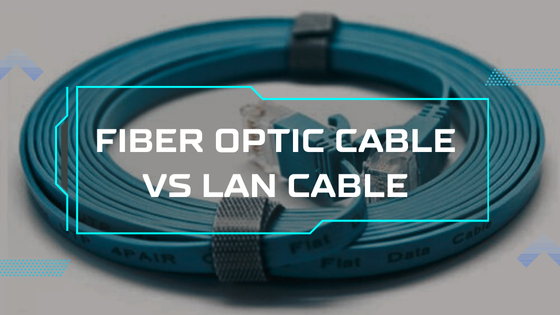In the modern world of interconnected technologies, the terms fiber optic cable and LAN (Local Area Network) often come up in discussions about networking and communication systems. While both are crucial for transmitting data, they operate differently and serve distinct purposes. Let’s explore สายไฟเบอร์ออฟติกต่างจากแลนอย่างไร their features, advantages, and applications.
Fiber Optic Cable: Breaking the Speed Barrier
Fiber optic cables are at the forefront of high-speed data transmission. Unlike traditional copper cables, which use electrical signals to transmit data, fiber optic cables use light. This fundamental difference makes fiber optic cables significantly faster and more efficient.
How Fiber Optic Cables Work
Fiber optic cables contain thin strands of glass or plastic fibers that transmit light signals over long distances. The core of the fiber carries the light, while the cladding surrounding the core reflects the light back, preventing signal loss. This technology allows data to travel at nearly the speed of light, providing incredibly high bandwidth and low latency.
Advantages of Fiber Optic Cables
- Speed: Fiber optic cables can transmit data at incredible speeds, making them ideal for applications requiring rapid data transfer.
- Distance: They can carry signals over much longer distances without significant signal loss, making them suitable for long-haul communications.
- Bandwidth: Fiber optic cables offer much higher bandwidth compared to copper cables, supporting a greater amount of data transmission.
- Interference: They are immune to electromagnetic interference, making them reliable in environments with a lot of electronic noise.
Applications of Fiber Optic Cables
Due to their high-speed capabilities and reliability, fiber optic cables are used in several critical applications:
- Internet Backbone: They form the backbone of modern internet infrastructure, carrying vast amounts of data across continents.
- Telecommunications: Fiber optics are extensively used in telecommunication networks for clear and rapid voice and data transmission.
- Medical Imaging: The cables enable high-resolution imaging in medical diagnostics.

Local Area Network (LAN): Connecting Devices Locally
A Local Area Network (LAN) is a network that connects computers and other devices within a limited area, such as a home, office building, or campus. LANs allow devices to share data and resources efficiently.
How LAN Works
LANs use various mediums for data transmission, including Ethernet cables, Wi-Fi, and fiber optics. The most common type is Ethernet LAN, using cables to connect devices to a central switch or router. This network infrastructure facilitates communication and data sharing among the connected devices.
Advantages of LAN
- Resource Sharing: LANs enable the sharing of resources, such as printers and storage devices, reducing costs and improving efficiency.
- Speed: Within a local area, LANs can provide high-speed connectivity, enabling fast data transfer between devices.
- Security: Being confined to a local area, LANs can be more secure against external threats when properly managed.
- Flexibility: LANs can quickly scale to add or remove devices as needed.
Applications of LAN
LANs are ideal for environments where devices need to communicate efficiently within a limited area:
- Offices: Connecting computers, printers, and servers to streamline business operations.
- Educational Institutions: Enabling resource sharing and communication among students and staff.
- Smart Homes: Integrating various smart devices for home automation.
How Do They Differ?
The primary difference between fiber optic cables and LAN is that one is a medium for transmitting data, while the other is a network infrastructure that connects devices. Here’s how they differ:
Functionality
Fiber Optic Cable: A medium for transmitting data using light.
LAN: A network that connects multiple devices within a limited area.
Speed and Distance
Fiber Optic Cable: Capable of long-distance high-speed data transmission.
LAN: Typically limited to a smaller area but provides high-speed connectivity within that scope.
Applications
Fiber Optic Cable: Used in wide-area networks and high-speed internet infrastructure.
LAN: Used for local networks in homes, offices, and campuses.
In Conclusion
Both fiber optic cables and LANs play pivotal roles in the realm of data communication. Fiber optic cables excel in long-distance high-speed data transmission, while LANs facilitate efficient communication and resource sharing within a limited area. For businesses or individuals looking to optimize their network, understanding these differences is crucial. For more information and networking solutions, consider visiting Personetshop, a reliable hub for top-quality networking products.